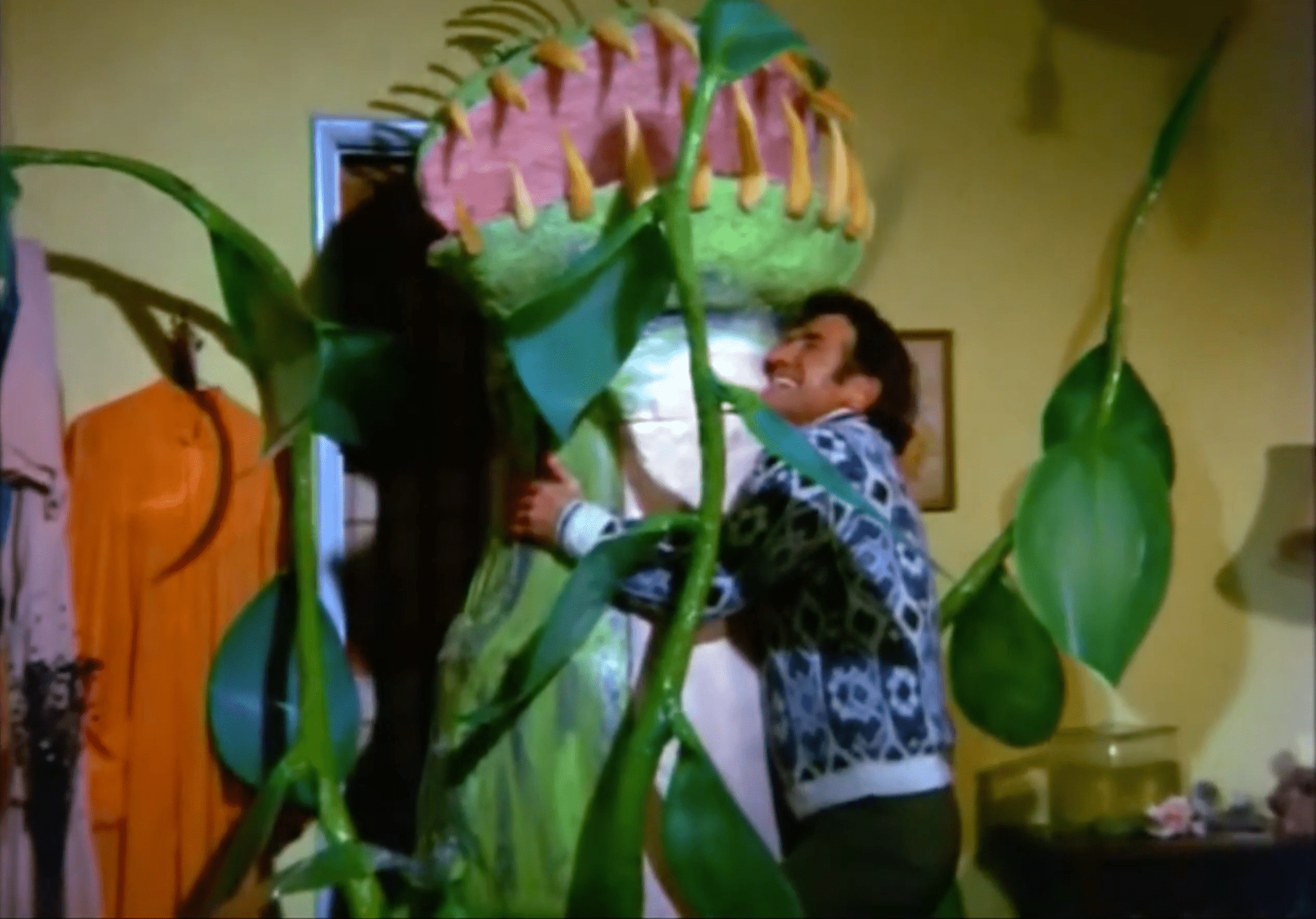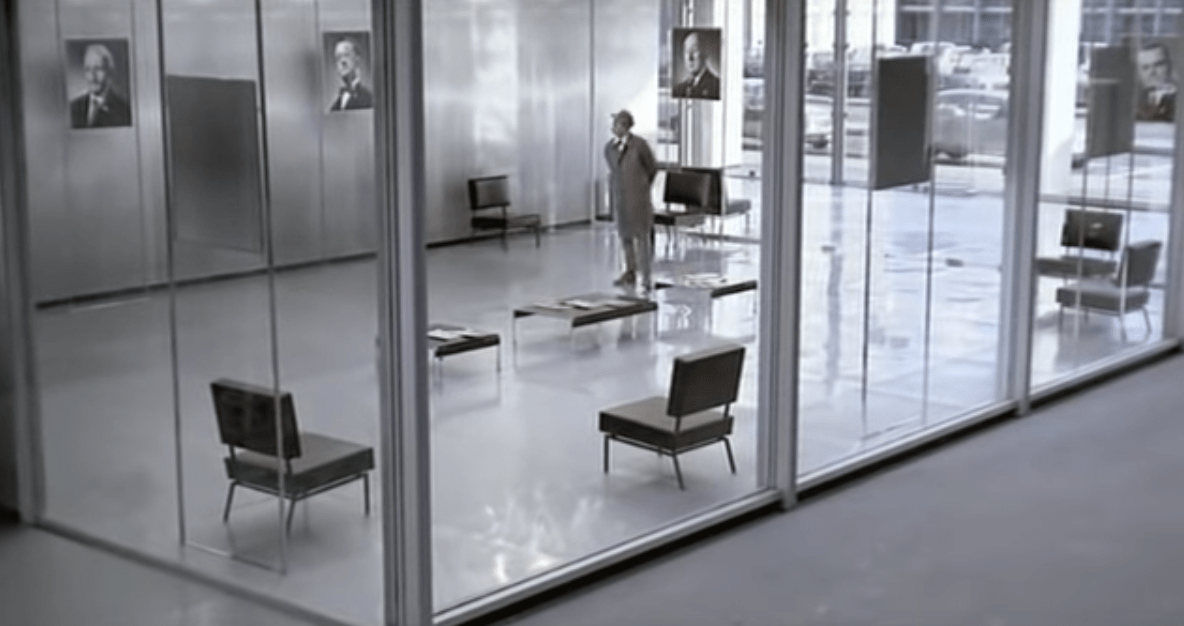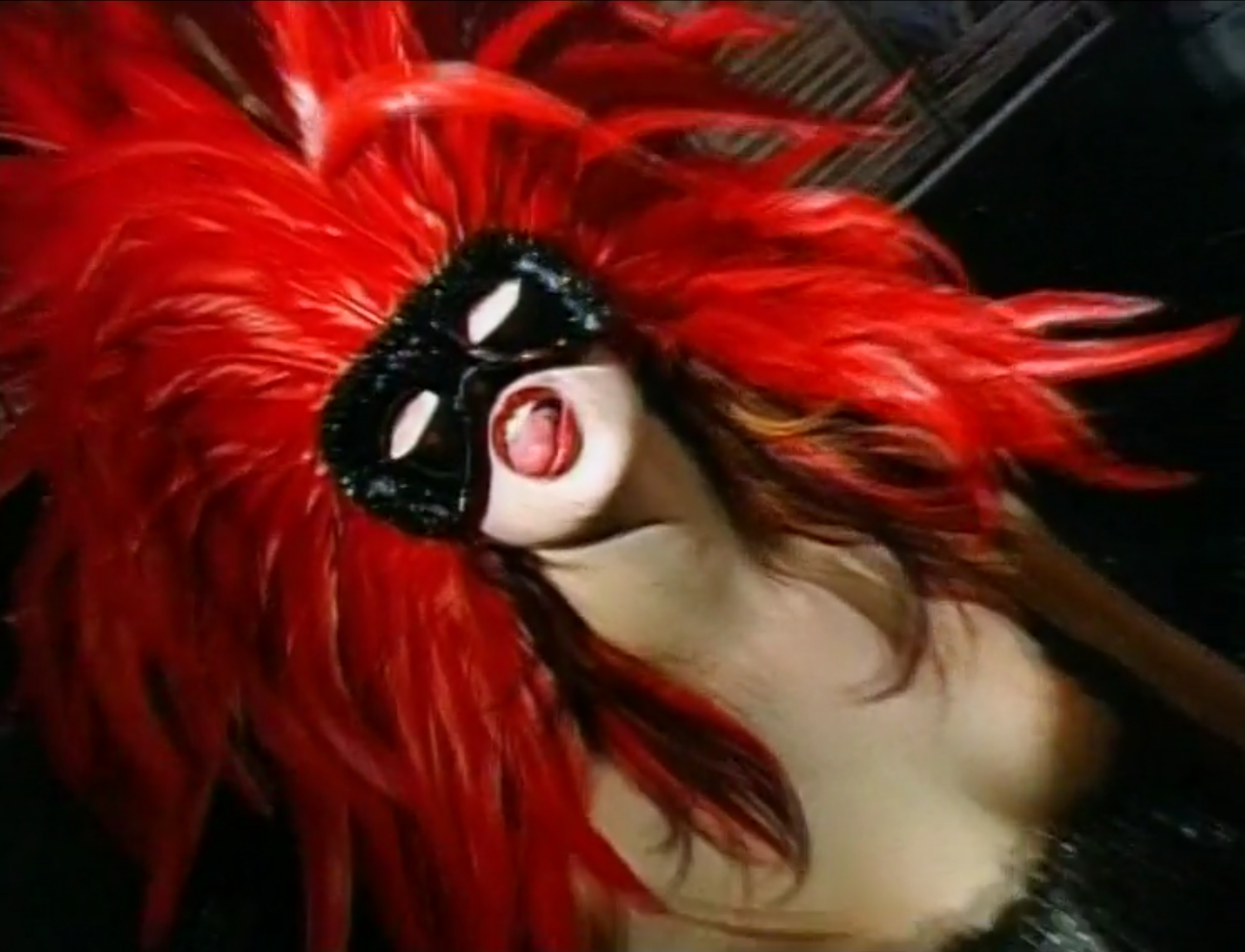
He Who Gets Slapped is an unusual film. It took a special confluence of factors to create something so layered and rich. It was made in America, but was based on a Russian play and directed by a Swedish director named Victor Sjöström. Released in 1924, it was the first film produced by the newly formed Metro-Goldwyn-Mayer Studios, Inc. In today’s parlance, MGM had not yet formed a “brand identity”, which gave Sjöström a little extra latitude to explore unique themes.
It would star one of Hollywood’s most famous and beloved stars, Lon Chaney, who by that time had already been in 133 movies. He would play opposite Norma Shearer, who was also a well-established leading lady.
He Who Gets Slapped was made before the Hays Code was instituted, and although there is no nudity, it has the darkness of a German Expressionist film, which the code was determined to avoid. In many ways, He Who Gets Slapped feels more European than American. It features tortured psychology, tragedy, and violence that was simply not seen in American films of that era.
The fact that He Who Gets Slapped is based on a 1915 Russian play further lends it a sense of gravity, and just to round out the array of influences, the play seems deeply influenced by the 1892 tragic operetta Pagliacci written in Italy by Ruggero Leoncavallo.
The result of all these contributors is uniquely filmic. The most compelling aspect of the movie is the way in which the language of film not only tells the story, but surrounds that story with commentary. The acting, the editing, and, especially, the absence of sound create a kind of meta arena for us to reflect on what we are seeing.
What we see is a young scientist named Paul who is betrayed by his benefactor, Baron Regnar. The Baron steals all of Paul’s research and presents it to the scientific community as his own. Paul tries to interrupt the presentation and claim what is rightfully his, but he is laughed off stage. To make matters worse, Regnar steals Paul’s wife as well.
Heartbroken, Paul runs off and joins the circus. He becomes a clown and performs at the center of a very popular act where he gets slapped in the face by dozens of clowns. He stands before the crowd, trying to speak, but the clowns keep calling him a fool as they line up to slap him.
While Paul labors through this self-imposed indignity, we, the audience, are repeatedly asked to consider why people laugh at the sight of someone getting slapped. One inter-title reads, “What is it in human nature that makes people quick to laugh when someone else gets slapped - Whether the slap be spiritual, mental or physical -?”
The question asks the film’s audience to evaluate the audience on screen. It draws attention away from the story and into reality, where we the audience might discover that the question is being asked of us. It asks us why we came to the film and why we are entertained by it, while simultaneously encoding what we see so that we do not laugh at the clown’s plight. It shows us what we are meant to find funny, and instead makes it feel tragic.
This is helped by two restrictions. One is the absence of sound. We receive a limited amount of information, which means we are less likely to forget ourselves and become completely absorbed by what we are seeing. As a spectator, we remain self-aware.
The second is the clown makeup. By whiting out all of the clown’s faces, they become parodic every-men. This is what Fellini used to great effect in several of his films. The clown represents our folly and asks us to laugh at it. It is an effort to reframe misfortune as a joke. This, again, keeps the audience from “over-investing” in the character and positions us as objective spectators.
The movie He Who Gets Slapped is introduced and presented by a clown. The scene opens and a clown is spinning a sphere on a stick. He represents fate, destiny, and perhaps God. He spins the sphere as if it is the Earth and he is the prime mover. In this way, everyone in the film is a clown. They are all a joke. They all fret and struggle against fate, but cannot win.

As a medium, film presents the viewer with more information than any other. There is sight and sound, movement and time, but there is also editing and context. The filmmaker cannot only adjust the lighting or the mise en scène, but he or she can cut and arrange time, or control our physical and mental perspective. In a silent film, this flood of information is slightly more manageable, but removing sound does not necessarily make it easier, or harder, just different.
He Who Gets Slapped is classified as a “thriller.” Its plot fits the genre, but it is also a psychological portrait of a man descending into desperation. It is decidedly not a descent into madness. That would be too simple. Paul is a complex combination of hero and villain, victim and perpetrator.
After Paul is betrayed by Baron Regnard, he gives up on life and purposely seeks out humiliation to wallow in. He becomes a physical and mental masochist, looking for opportunities to reenact the moment of his debasement over and over. As a clown, he not only gets slapped and laughed at, but is generally manhandled and thrown around as part of his slapstick routine. We watch him get dragged around the ring by a horse and thrown to the ground by other clowns.
There is one particularly cinematic and poignant symbol of his humiliation that comes in the form of a small heart-shaped pillow. Paul has a large heart icon sewn onto his flouncy costume. In his act, another clown rips off the icon revealing the small stuffed pillow heart. The assailant then digs a hole with his foot and buries the heart in the dirt. Each day after the show, Consuelo, the lovely trick horse rider, kneels down and sows the heart back into place. Again, it is through film, silent in particular, that this scene comes to life. We see the symbol of a heart on his shirt, abused and degraded. We watch as he picks it up from the dirt and brushes it off. It is a visual soliloquy on love and redemption.

The following paragraph contains spoilers.
Paul, of course, falls in love with Consuelo, but she is already embroiled in a tragic love triangle. Despite the hopeful heart imagery, Paul is never truly healed. Instead, he sacrifices himself in a desperate attempt to resolve Consuelo's situation. He commits two murders and is himself murdered, all so Consuelo can be with her one true love, her horse-riding partner Bezano.

When Paul first joins the circus, he adopts a new name to go with his new identity. He calls himself “He Who Gets Slapped.” His friends just call him “He,” but it is a potent reminder of who he is and how his character functions. If he is the protagonist of the story, his name sets up a dissonant tension. The word “protagonist” comes from Greek. Prōtos, meaning "first in importance", and agōnistēs, meaning "actor". If Paul is the most important character in the film, then his moniker doesn’t seem to fit him, unless the one who gets slapped is somehow ennobled by the experience.
The nature of a slapstick clown is to be the fool, the scapegoat, the unwanted side of ourselves. He is clumsy, and foolish, and never wins. We laugh because he acts out our anxieties. We hope that his playing the fool will spare us the embarrassment of our own foolishness. In this way, he is a sacrifice. He is laughed at in order to dispel our worries about being laughed at ourselves.
Throughout the film, we have shots of the laughing audience. We see them laughing and pointing at Paul. We also see the other clowns laughing at him. Sometimes, the image of the audience is cross-faded with images of the scientists who laughed at Paul when he tried to expose the Baron as a fraud. At one point, there is a double exposure showing the audience as made up of the scientists, each one wearing a clown hat. These are Paul's manic hallucinations. They are the unaddressed trauma Paul cannot face, but they are also images that blur the line between the performers and their audience, and therefore blur the line between us and the film.

As all this floats in front of our eyes, the ring of the center stage periodically transforms into the cradling ring around a large globe. We see the Earth spinning as clowns march around it in a never-ending cyclical parade. A parade that goes nowhere but never stops. The clowns shift back and forth between images of ourselves, images of the other, representations of our purposeless lives, and godlike beings that run the universe.
There is so much that can be said by examining the clown and his relationship to the audience, and since Paul retains his stage name even outside the circus tent, we always see him as more than just a single character. He is He Who Gets Slapped. A man who has internalized his shame and disappointment, and allowed it to displace his free will and humanity. He renounces the full spectrum of possibilities that humans enjoy, and gives himself a name that binds him to a single purpose.
He Who Gets Slapped doesn’t fit with the entertainment that Hollywood was producing at the time. In 1924, American studios released films like The Navigator with Buster Keaton and The Thief of Bagdad with Douglas Fairbanks. He Who Gets Slapped was more in line with F.W. Murnau’s The Last Laugh,which also came out in 1924. It was more grounded in everyday life, but still shared many common themes with He Who Gets Slapped. Robert Wiene released The Hands of Orlok in 1924 as well. It had a different storyline, but also dealt with tortured psychological states.
In 1928, a film called The Man Who Laughs was made by an expat from Germany named Paul Leni. Like He Who Gets Slapped, The Man Who Laughs features a clown as the protagonist. A man who was deliberately disfigured as a child, so that he could be featured in a freak show. His mouth is permanently fixed in a grotesquely exaggerated smile. There are several heart-wrenching scenes where his eyes convey pain or fear, while his mouth stays frozen in a rictus of forced happiness. It’s a very effective and evocative dissonance. Despite its gruesome premise and inventive features, the film overall ends up being a relatively conventional melodrama where everything works out in the end. The characters all fall easily into categories of either good or bad, which just drains the film of nuance. The Man Who Laughs lacks the substance and depth of He Who Gets Slapped.

American audiences prefer to see heroes triumph, rather than witness darker depictions of irrationality and moral ambiguity so prevalent in Europe. Perhaps America’s optimism was bolstered by its territory having emerged unscathed from World War I, while most of Europe had to dig itself out of the burnt rubble of war.
He Who Gets Slapped did well in American theaters, a possible indicator that American audiences were more insightful than the studios gave them credit for, but soon after, the combination of capitalism and the Hays Code would ensure that American films stayed mostly optimistic. Will Hays felt the need to teach the public right from wrong by rooting out moral ambiguity and replacing it with simplistic, cut-and-dried depictions of good and evil.
The for-profit studios eschewed complex subject matter and focused on perfecting a recipe that would sell tickets. For them, film was a business, not an art. For people like Samuel Goldwyn, the primary purpose of any film was to make money. He Who Gets Slapped is one of the few films that managed to sneak a little creativity and depth past the gatekeepers.

If you enjoyed this article you might also enjoy this https://filmofileshideout.com/archives/after-un-chien-andalou-came-lage-dor/




